The spotlight for our July/August issue shines on tympanometers, which help to evaluate the condition of the middle ear and movement of the tympanic membrane. Our roundup reflects the views of participants and is not intended to be a scientific survey.
We asked manufacturers/distributors:
- What are your best-selling products?
- Why are those items selling versus your alternative tympanometer products?
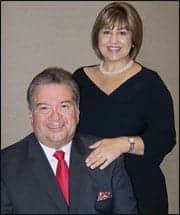
|
| David P. Speidel |
DAVID P. SPEIDEL, MS, FAAA
Director of Audiology Services
Interacoustics, Eden Prairie, Minn
The Interacoustics AT235 series has been our best-selling tympanometer for the past 8 years. The small instrument, with a built-in printer, includes a choice of two contralateral reflex transducers and an additional probe for switching between a screening or clinical application. The “H” version adds high-frequency probe tones, manual pump control, and an additional ETF test. We expect the new Titan to replace the AT235 in popularity. The handheld device offers users more flexibility, since it can be used as a portable instrument or a PC-controlled device. The Titan features two standard probe configurations and a wealth of advanced programming features that allow user-defined test parameters to reduce test times. The PC-based system also provides for professional-quality 8 1/2-inch by 11-inch reports and integration into the Interacoustics audiometric report formats.

|
| Terry Ross |
TERRY ROSS
Vice President
MedRx Inc, Largo, Fla
MedRx has recently introduced a new wireless handheld screening tympanometer that is elegantly shaped and lightweight, and produces fast and accurate test results. The system is extremely small, and is not tethered to any platform, making it an extremely portable device. Large, intuitive, high-resolution menus provide data before, during, and after the tests. The compliance peak pressure, gradient, ear canal volume, and ipsilateral reflexes at 500Hz, 1kHz, 2kHz, and 4kHz are measured in just seconds. Once the probe is properly sized and placed in the ear canal, the system automatically achieves a seal and testing begins. Results can be saved within internal memory with a discreet patient identifier, within NOAH, and can be printed by the user’s PC printer via IrDA port. The MedRx tympanometer comes standard with a carrying/storage case and a reuseable ear tip kit.
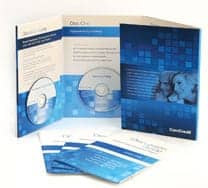
|
| Morten Hoegholm Pedersen |
MORTEN HOEGHOLM PEDERSEN
Director, Product Management and Audiology
GN Otometrics, Taastrup, Denmark
The MADSEN OTOflex 100 is a comprehensive diagnostic immittance device that is popular with audiologists and ENT doctors worldwide. It features tympanometry, reflex screening/threshold/decay and ETF, all in a single, compact unit, and can be used handheld or as a PC-operated device. A strong benefit of the OTOflex 100 is its direct integration with other audiological equipment such as our new clinical audiometer, the MADSEN Astera. Both instruments use our OTOsuite software, which provides the users with a single point of entry for all testing. This setup smoothens their work process, saves them valuable time, and even allows them to do professional reporting where measurement data from both immittance and audiometry is combined in one report. The new MADSEN Astera is a market-leading clinical audiometer, and we see more and more customers buying the two instruments as a combo solution.
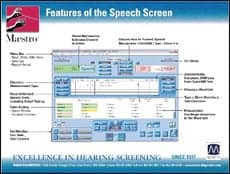
|
| Mel Gross |
MEL GROSS, AUD, CCC-A, FAAA
Audiometric Sales Manager
Starkey Laboratories Inc, Eden Prairie, Minn
Starkey’s most popular tympanometer is the Maico MI 24. The Maico MI 24 is an automatic tympanometer with ipsilateral reflexes, built-in LCD screen, and printer. The versatility of this model allows the user to add contralateral reflex testing as well as multiprobe frequencies to meet their office needs. Wide band reflectance (WBR) holds promise of replacing tympanometry, especially for the pediatric population. One of the issues with tympanometry (when testing babies less than 6 months old) is the changing of pressure. Is the tympanic membrane moving or the ear canal wall? WBR looks at the inefficiency of the middle ear system by emitting a chirp in the ear canal and measuring what is absorbed versus what is reflected. After all, the middle ear system is the gateway to the rest of the auditory system, which can impact different methodology results (ie, OAE and ABR).
We asked practitioners/dispensers:
- Which tympanometer products do you favor and why?
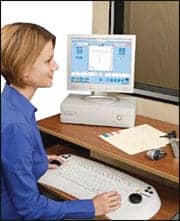
|
| Tonya Barlow |
TONYA BARLOW, MS, CCC-A
Director of Audiology
Avada Audiology & Balance Centers’ Kentucky/ Indiana region
We use both GSI and Interacoustics tympanometers. We prefer the GSI for ease of use and dependability. It is extremely difficult to maintain a seal on the Interacoustics model. The GSI are sturdy and dependable. We very rarely have any problems with them, other than the paper being very difficult to replace.
ROBERT HERRING, AUD
Owner
Listen Hear Audiology Center Bryan, Tex
I recently acquired the Otowave tympanometer Model 102, manufactured for MedRx by Amplivox. I use it with the entire MedRx audiometry suite. It is a really nice tympanometer because it works well and I’m not tied to one room—it’s a wireless, handheld device, and it can do immittance measurements as well as reflex threshold measurements. In my practice, I don’t really have the need for doing anything like reflex decay or eustachian tube function testing, so for me it’s perfect. I can be in my exam room and do tympanometry and not be tied to the system where the audiometer is. Everything’s networked in my office, so I can be in multiple rooms and do the test and get the information into NOAH and the system just by pushing a button. It saves me time, and I don’t have to print out a lot of paper. My past immittance equipment experience has been with GSI products. While the products were sound and reliable, I was tethered to that equipment, and I had to bring the patient to the unit. Now I can bring the unit to the patient, and I can test them wherever I am. For me, it’s more convenient, especially if I have a less-mobile person. I can also take it from office to office, or I could have taken it to the Expo that I did today and plugged it right in with my laptop and with my MedRx video otoscopy and done some middle ear screenings on site. It’s very easy to operate.
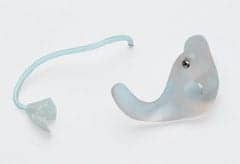
|
| Jillian Barrett |
JILLIAN BARRETT, PHD, FAAA, CCC-A
Aud Squad Balance & Hearing Svcs
PC, Modesto, Calif
and
Blackhawk Audiology
Blackhawk, Calif
I am currently using two Otometrics OTOflex 100 clinical tympanometers (one at each office location). I have used many brands and models previously. I am extremely happy with the Otometrics OTOflex 100 tympanometer. It’s no larger than my Starbucks travel mug, yet it’s a fully clinical immittance bridge with the ability to do tympanometry, acoustic reflex diagnostics or screenings, acoustic reflex decay measurements, and eustachian tube function testing. The instrument is sensitive and yields extremely accurate measurements, and it didn’t break when I dropped it. It also allows me to program several different test paradigms, which is helpful when I’m setting up protocols for different populations. This feature also allows each person in my office to customize their own settings. My students enjoyed this as they rotated through the clinic at the university in which I used to teach. I greatly enjoy bringing the tympanometer to my patients rather than bringing my patients to the tympanometer on the counter, where conventional immittance units are placed. This is quite helpful when I have patients who have ambulatory concerns. When I do mass screenings, I use it as a stand-alone, and when I’m seeing patients in my private practice, I use it in conjunction with my PC and NOAH. The flexibility is very valuable to me. It stores up to 100 screenings or 20 comprehensive immittance evals. This is helpful, as it allows me to come back and store data in NOAH at a later time. I like that I can go back in and add a patient’s personal data (name, DOB, etc) after I’m done taking measurements. I like the monitor; it’s easy to see my results. I especially like the probe—it’s extremely flexible, not at all stiff, and it doesn’t pull itself out of the ear canal. The OTOflex has a great interface with Otometrics’ OtoSuite, and the reports have an excellent presentation. I just got an Astera audiometer, so now my audiometry and immittance measurements are all printed on one sheet through OtoSuite. I was a little intimidated when I first got my OTOflex because it has only five buttons and one dial/wheel. I had excellent training on it, and within a few days I knew my way around the OTOflex, and was able to take full advantage of its many options and features. It’s a small-sized powerhouse! I am so satisfied with it that I have one in each of my two offices. I have used many different brands and models of immittance bridges in the past 20 years. I have used portable and countertop units, and I have used screeners and diagnostic tympanometers. I have used units in a variety of settings, including hospitals, physicians’ offices, university settings, mobile audiology units (trucks), and my own private practice. I have used units that interface with NOAH, and those that do not. Using so many different pieces of equipment helped me identify features that were critical to me as well as features that simply made it easier to take measurements. I found some machines to be finicky—these were never a pleasure to use, even when they took excellent measurements and had nice monitor screens. Simply put, it needs to work, it needs to work smoothly, and it needs to have longevity.





